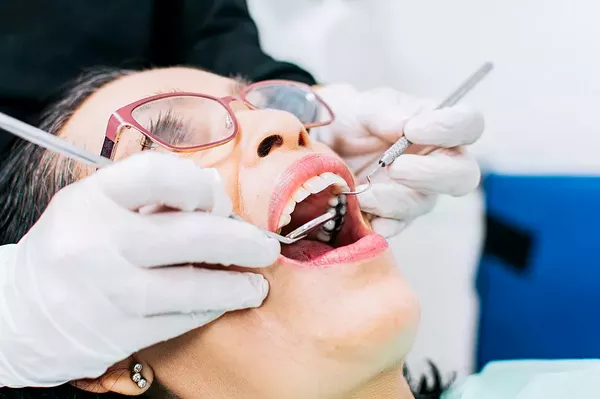In the realm of dental care, fillings are a common procedure aimed at restoring the integrity and function of a tooth compromised by decay or damage. Whether it’s your first filling or you’re a seasoned veteran of dental work, understanding how to care for your mouth immediately after the procedure is essential for ensuring a smooth recovery process and optimal healing.
Immediate Aftercare
One of the first questions many patients have after getting a filling is, “Can I eat or drink?” The answer isn’t a simple yes or no, as it depends on several factors, including the type of filling material used. Different materials require different considerations in terms of postoperative care.
Type of Filling Materials
The two primary types of filling materials commonly used today are amalgam (often referred to as silver fillings) and composite (known as white or tooth-colored fillings). Understanding the characteristics of each type can help guide your post-filling eating and drinking habits.
- Amalgam Fillings: These traditional fillings are composed of a mixture of metals, including silver, mercury, tin, and copper. While highly durable, they typically take longer to set than composite fillings. It’s generally recommended to wait at least 24 hours before chewing on the side of the mouth where the amalgam filling is located. This waiting period allows the filling to fully harden and stabilize, reducing the risk of displacement or damage.
- Composite Fillings: Made of a mixture of plastic and fine glass particles, composite fillings harden immediately upon exposure to a special curing light. This means that, in most cases, you can eat and drink right after the procedure. However, caution should still be exercised, especially if the mouth is still numb from the local anesthetic.
Effects of Local Anesthetic
Speaking of numbness, let’s address the duration and implications of the local anesthetic commonly administered during dental procedures. Local anesthetic is used to numb the area around the tooth being treated, ensuring a pain-free experience during the filling process. However, this numbness can persist for varying lengths of time, typically ranging from one to three hours.
Postoperative Discomfort
It’s not uncommon to experience some discomfort after getting a filling, especially once the numbness wears off. This discomfort may include sensitivity to pressure, temperature, or sweets, as well as minor soreness around the treated tooth. Over-the-counter pain medication, such as ibuprofen or acetaminophen, can help alleviate these symptoms if necessary. Additionally, sticking to soft foods for the first few days can minimize discomfort and promote healing.
Gum Tissue Discomfort
In some cases, the gum tissue surrounding the filled tooth may feel irritated or tender. This is usually temporary and can be relieved by rinsing with warm salt water several times a day. The salt water helps reduce inflammation and promotes healing, providing relief from discomfort.
Sensitivity to Temperature
Following a filling, it’s not uncommon to experience heightened sensitivity to hot and cold temperatures. This sensitivity usually subsides within a few days but can be managed in the meantime by avoiding extreme temperatures and opting for lukewarm or room-temperature foods and beverages. If sensitivity persists or worsens over time, it’s essential to consult your dentist to rule out any underlying issues.
Bite Adjustment
Sometimes, despite the dentist’s best efforts, the bite may feel uneven after a filling. This can result in discomfort or difficulty chewing. If you notice any issues with your bite, don’t hesitate to contact your dentist. They can make necessary adjustments to ensure that your teeth come together properly, restoring normal function and comfort.
Eating Tips
As you navigate the post-filling recovery period, it’s essential to be mindful of what you eat and how you eat it. Here are some practical eating tips to help you through the process:
- Start with Soft Foods: In the immediate aftermath of a filling, stick to soft, easy-to-chew foods such as soups, yogurt, mashed potatoes, and smoothies. These foods are gentle on the teeth and less likely to cause discomfort.
- Avoid Hard, Sticky, or Chewy Foods: Until the filling has fully set and any numbness has worn off, steer clear of foods that are hard, sticky, or chewy. These types of foods can put unnecessary strain on the filling and increase the risk of dislodgment or damage.
- Take Small Bites: When you do resume eating solid foods, take small, manageable bites and chew slowly and carefully. This reduces the likelihood of accidentally biting down too hard on the filled tooth and causing discomfort or damage.
- Stay Hydrated: Drink plenty of water to stay hydrated and promote saliva production, which helps protect the teeth and gums from decay and infection. Opt for lukewarm or room-temperature water to minimize sensitivity.
- Practice Good Oral Hygiene: Even though your mouth may be tender after a filling, it’s essential to maintain good oral hygiene habits. Continue brushing and flossing gently, being careful around the filled tooth to avoid irritation.
Conclusion
Proper post-filling care is crucial for promoting healing, minimizing discomfort, and ensuring the longevity of your dental work. By following the guidelines outlined above and consulting with your dentist if you have any concerns or questions, you can navigate the recovery process with confidence and ease. Remember, a healthy smile starts with attentive care and maintenance.
FAQs About Post-Filling Care
1. How long do you have to wait to eat or drink after a filling?
The waiting period before eating or drinking after a filling depends on the type of filling material used and the recommendations of your dentist. If you have received an amalgam (silver) filling, it’s generally advised to wait at least 24 hours before chewing on the side of the mouth where the filling is located. This allows the filling to fully harden and stabilize. On the other hand, composite (white or tooth-colored) fillings harden immediately upon exposure to a curing light, so you can typically eat and drink right after the procedure. However, it’s essential to exercise caution, especially if your mouth is still numb from the local anesthetic.
2. What not to do after getting a filling?
After getting a filling, it’s important to avoid certain activities to promote healing and prevent complications. Some things to avoid include:
Chewing on hard or sticky foods that could dislodge or damage the filling.
Drinking hot or cold beverages that may increase sensitivity.
Consuming alcoholic beverages, as they can interfere with the healing process and interact with any medications you may be taking.
Smoking, as it can delay healing and increase the risk of infection.
Engaging in strenuous physical activity that could lead to accidental injury to the treated tooth or surrounding tissues.
Following your dentist’s postoperative instructions and avoiding these activities can help ensure a smooth recovery.
3. Can I brush my teeth after a filling?
Yes, you can and should brush your teeth after getting a filling. Maintaining good oral hygiene is essential for promoting healing and preventing complications such as infection or decay. However, it’s important to be gentle around the filled tooth, especially in the immediate aftermath of the procedure when the surrounding tissues may be tender. Use a soft-bristled toothbrush and gentle, circular motions to clean the area thoroughly while minimizing irritation.
4. Can I eat pizza after a filling?
Whether you can eat pizza after a filling depends on the type of filling material used and how long it has been since the procedure. If you have received an amalgam filling, it’s best to wait at least 24 hours before consuming chewy or hard foods like pizza crust. However, if you have composite fillings that harden immediately, you may be able to enjoy pizza sooner. Remember to chew carefully and avoid putting excessive pressure on the filled tooth until it has fully stabilized.































